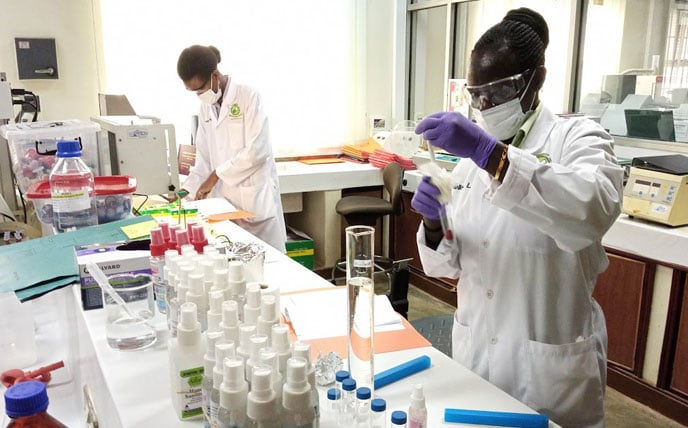Rice growers accused of degrading Ssese islands

Workers weigh rice at Mwena rice mill in Kalangala District on Febuary 12,2020. PHOTO/ SLYVESTER SSEMUGENYI
What you need to know:
- Routine growing of rice on the same piece of land and on hilltops within underlying Islands was also outlawed.
Increasing rice growing in Kalangala District is partly blamed for the environmental degradation in the area.
This business, which started nearly a decade ago, has forced many islanders to clear private forests.
The Islanders depend on fishing and oil palm growing where they derive a livelihood.
Currently, more than 5,000 households are engaged in rice growing and rice fields are mushrooming in the islands, including Buyovu, Bufumira,Bunyama and Kaazi ,Bukasa, and Bubeke.
Rice growing has also lately extended to Funve Island in Mazinga Sub-county.
According to Mr Jackson Baguma, the Kalangala District production officer, encroachment by rice growers is more evident in wetland buffer zones and private forest reserves.
“We are let down by private forest owners who hire their land to businessmen who clear it for upland rice production. It’s the same people who are also encroaching on the wetlands,” he said in an interview last week.

Part of Funve Forest in Kalangala District which has been cut to grow rice and maize. PHOTO/DAVID SEKANYINGA
In 2018, the National Environment Management Authority (Nema) issued guidelines that require farmers to first obtain licences from the district production department before growing rice on any island within the district, and, all rice growers were advised to use land which is outside forest reserves and buffer zones.
Mr Joseph Byaruhanga, the Kalangala District forestry officer, said migrant workers, mostly from neighbouring Rwanda, are responsible for the environmental degradation.
“Those migrant workers mostly from Rwanda hire land from private landlords and clear everything they find there, they start to grow rice and they don’t allow any tree to grow claiming they will kill their crops,” he said.
Adding: “However, we have tried to talk to the private forest owners to follow the law and regulate tree cutting in their forests.”
Kabaka’s Chief in Kalangala, Mr Augustine Kasirye , who also doubles as the custodian of all forests on Buganda Kingdom land in the district, admitted that some of the forestry land occupied by rice growers belongs to the kingdom.
“It is true some of those people [rice growers] have encroached on our forests thinking that they cannot be chased away. Let them know that we are coming, they can’t destroy kabaka’s forests and we just sit and watch,” he said.
Available records at the district indicate that by 2018 more than 7,000 acres had been covered by rice, but the acreage has since risen to more than 12,000.
Mr Byaruhanga warned that if uncontrolled felling of trees in private forests and encroachment on wetlands don’t reduce, they will be forced to ban rice growing altogether.
A couple of years ago, district authorities had proposed a special tax on rice growers, but it was suspended on account that there were still few people doing the business.
Under the rice tax ordinance, all rice growers owning more than one acre were supposed to pay a tax equivalent to 5 percent of their harvest to the sub-county every season.
During the same period, the district also issued stringent guidelines to farmers planning to grow rice in the area. The authorities also banned rice growing within 200 metre buffer zone for lakes and 100 metre buffer zone for wetlands.
Routine growing of rice on the same piece of land and on hilltops within underlying Islands was also outlawed.
This followed wanton destruction of wetlands and forests in the district by farmers who are venturing into rice growing which has of late become a lucrative business in Kalangala and neighbouring Mpigi District.
About Forest cover
Kalangala’s forest cover currently stands at 22 percent down from 54 percent in 1954. Rice growing accounts for 20 percent of the forest cover depletion, oil palm growing (18 percent), and timber cutting, settlement, and charcoal
burning (16 percent).
17 of the 31 forest reserves in the area have been depleted. However, the district has embarked on distributing free tree seedlings to residents to restore the depleted natural forest cover.




